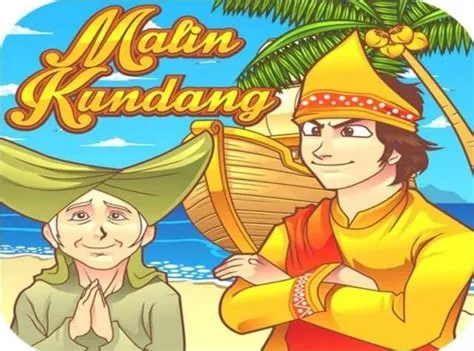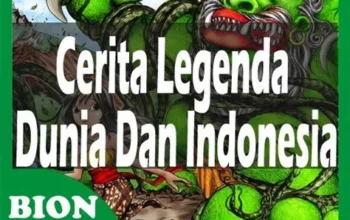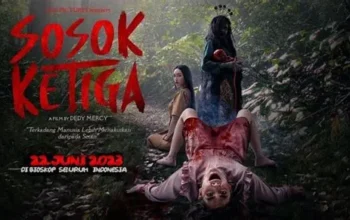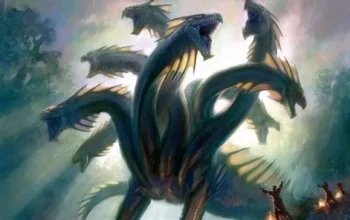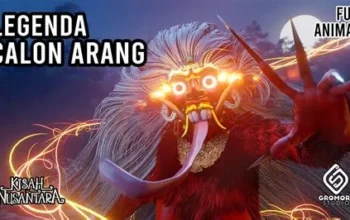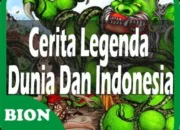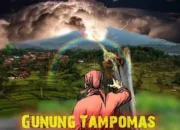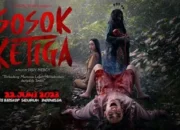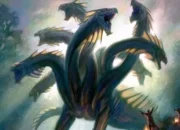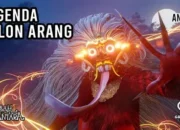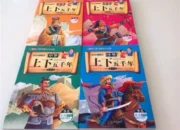A Warm Welcome to Dewakata
The Enchantment of Indonesian Folklore
Sobat Dewakata, have you ever wondered about the hidden heart of Indonesia, beating beneath the vibrant surface of bustling cities and breathtaking landscapes? It’s a heart woven from centuries of storytelling, a tapestry of myths, legends, and folktales that reveal the soul of this archipelago. Today, we embark on a captivating journey to explore the rich world of Indonesian folklore, delving into stories that have been passed down through generations, shaping beliefs, customs, and the very identity of the Indonesian people. Prepare to be mesmerized!
Why Indonesian Folk Tales Matter
These aren’t just bedtime stories; they’re living history, reflections of the Indonesian spirit and its enduring connection to nature, spirituality, and community. Understanding these tales gives us a unique window into Indonesian culture – its values, its fears, its hopes, and its dreams. From the mischievous spirits of the rice paddies to the courageous heroes battling mythical beasts, each story holds a piece of the puzzle that is Indonesia. It’s like uncovering a hidden treasure map, leading us to a deeper appreciation of this fascinating country.
The Power of Storytelling in Indonesian Culture
In many Indonesian cultures, oral tradition holds immense significance. Stories are not merely entertainment; they serve as moral compasses, guiding principles, and tools for transmitting knowledge and wisdom. These tales are often told during ceremonies, festivals, or simply as a way to bring families together. It’s a living, breathing tradition that continues to shape Indonesian lives today, connecting the past to the present in a deeply meaningful way.
Diversity in Indonesian Folklore: A Kaleidoscope of Stories
Indonesia’s archipelago is a melting pot of cultures, and its folklore reflects this incredible diversity. From the haunting tales of West Java to the vibrant legends of Bali, each region boasts its own unique collection of stories. This incredible variety is a testament to the rich tapestry of cultures that have shaped Indonesia. We will explore this diversity throughout our journey, showcasing the unique narrative styles and themes of various regions.
Exploring Key Themes in Indonesian Folk Tales
Nature’s Powerful Presence
Like yang telah kita bahas sebelumnya, the richness of Indonesian folklore is deeply intertwined with the natural world. Many stories feature spirits inhabiting forests, mountains, and seas, reflecting a deep reverence for nature and the interconnectedness of all living things. These aren’t just passive settings; nature itself often plays an active role, shaping the narrative and influencing the characters’ destinies. We’ll explore stories that highlight the powerful forces of nature and the vital role it plays in Indonesian culture.
Mythical Creatures and Supernatural Beings
Prepare to meet a cast of unforgettable characters: mischievous spirits, powerful deities, and terrifying mythical creatures. These beings are not simply figments of imagination; they represent the anxieties, hopes, and beliefs of the Indonesian people. We’ll uncover the symbolic meanings behind these creatures and the role they play in Indonesian mythology.
Heroes and Villains: Moral Lessons and Archetypes
Indonesian folk tales are brimming with compelling characters, from courageous heroes fighting for justice to cunning villains who sow chaos. These archetypes offer valuable moral lessons, often exploring themes of good versus evil, perseverance, and the consequences of one’s actions. We will explore the complex characters and the moral lessons embedded in these stories.
Social Commentary and Cultural Values
Many Indonesian folk tales serve as subtle commentaries on social issues, offering insights into historical events and reflecting the prevailing values and beliefs of different communities. These stories can reveal the social dynamics and power structures within Indonesian society across different eras, reflecting a nuanced understanding of the complexities of the culture.
Famous Indonesian Folk Tales and Their Significance
The Legend of Sangkuriang
This epic tale of a son unknowingly falling in love with his mother is a classic example of the dramatic and often tragic narratives found in Indonesian folklore. It explores themes of forbidden love, fate, and the consequences of hubris, reflecting the complex emotional landscape of human relationships. The tale also reveals fascinating insights into pre-colonial beliefs and customs.
The Story of Malin Kundang
A story of filial piety, this tale serves as a powerful reminder of the importance of respecting one’s parents. The tragic fate of Malin Kundang, transformed into stone for his disrespect, continues to resonate across generations, highlighting the core values of Indonesian culture. The story’s enduring power lies in its simple, yet profound message.
The Legend of Nyi Roro Kidul
This mystical tale of the Queen of the South Sea and her connection to the coastal regions of Java is a masterpiece of Indonesian folklore. It explores themes of power, mystery, and the supernatural, blending mythology with historical references. The story reflects a complex relationship between humans and the sea, highlighting its both benevolent and dangerous aspects.
The Tale of Joko Tarub
This engaging story delves into the world of celestial beings and the consequences of greed and deception. Joko Tarub’s tale emphasizes the importance of honesty and gratitude, cautioning against exploiting the generosity of others. The tale’s captivating narrative and moral message contribute to its continued popularity.
Modern Interpretations and Adaptations of Indonesian Folk Tales
Folk Tales in Contemporary Literature
Indonesian folk tales continue to inspire contemporary writers, who reimagine these classic stories for modern audiences, breathing new life into them while maintaining their cultural relevance. We will explore how contemporary literature engages with these timeless stories, showcasing their enduring appeal.
Folk Tales in Film and Television
The visual medium has also embraced Indonesian folk tales, bringing these enchanting narratives to life on screen. Films and television shows adapt these stories for a broader audience, often introducing new creative perspectives and interpretations. We’ll delve into notable examples, showcasing the diverse adaptations and their impact.
Folk Tales in the Arts: Paintings, Sculptures, and More
The artistic expression of Indonesian folk tales knows no bounds, with artists reinterpreting these stories through various mediums, such as paintings, sculptures, and theatrical performances. These artistic interpretations showcase the enduring impact of these stories on Indonesian creativity and the diverse ways they are expressed.
Folk Tales in Music and Dance
Music and dance often intertwine with Indonesian folk tales, using rhythmic expressions and evocative movements to convey the stories’ essence. We’ll explore examples where these art forms come together to create captivating performances that resonate deeply with audiences.
Preserving and Promoting Indonesian Folklore
The Role of Oral Tradition
Oral tradition remains vital in preserving Indonesian folklore, with storytellers continuing to pass down these narratives through generations. We will explore the crucial role of these oral storytellers in maintaining the cultural heritage of Indonesia.
The Importance of Documentation and Research
The documentation of Indonesian folk tales is essential for preserving them for future generations. Research efforts are vital in understanding the cultural context and significance of these stories. We’ll delve into the importance of ongoing research and preservation initiatives.
Education and Awareness
Educating younger generations about the richness of Indonesian folklore is paramount. Integrating these stories into school curriculums and promoting awareness through various channels helps ensure the continuation of this valuable cultural heritage.
The Challenge of Modernization
Modernization presents challenges to the preservation of traditional storytelling. We’ll explore the complexities of balancing cultural preservation with the changing times and how to ensure these stories remain relevant.
Conclusion: Embracing the Legacy of Indonesian Folk Tales
Sobat Dewakata, our journey through the world of Indonesian folklore has unveiled a treasure trove of stories, each one a testament to the rich cultural heritage of this magnificent archipelago. From epic tales of heroes to haunting legends of mythical creatures, these narratives have shaped Indonesian identity for centuries. By understanding and appreciating these stories, we gain a profound understanding of the values, beliefs, and experiences that have defined Indonesia’s journey. Let’s actively participate in preserving and promoting this cultural legacy for generations to come. Share these tales, keep them alive, and let their magic continue to weave its enchantment.
Call to Action:
Share this article with your friends, family, and fellow culture enthusiasts! Let’s collectively keep these incredible stories alive. And, most importantly, leave a comment below sharing your favorite Indonesian folktale or any experience you’ve had with Indonesian culture!
Frequently Asked Questions (FAQ)
Q1: Are Indonesian folk tales always happy endings?
A1: Not at all! Many Indonesian folk tales feature tragic endings, reflecting the complexities of life and serving as cautionary tales. These stories, while sometimes heartbreaking, often offer valuable moral lessons and provide a realistic portrayal of the human condition.
Q2: How do Indonesian folk tales reflect the country’s diverse geography?
A2: Indonesia’s diverse geography is reflected in its folk tales, with stories often featuring unique elements tied to specific regions. For instance, coastal tales often feature sea creatures and legends connected to the sea, while those from mountainous regions incorporate elements of the landscape and local beliefs.
Q3: Are there any modern interpretations of Indonesian folk tales that challenge traditional interpretations?
A3: Absolutely. Modern interpretations sometimes challenge traditional interpretations, offering feminist perspectives, questioning traditional power structures, or exploring alternative moral lessons. This reinterpretation keeps these stories relevant and engaging for contemporary audiences.
Q4: How can I learn more about specific regional folk tales of Indonesia?
A4: You can delve deeper into specific regional tales through academic research, libraries, and online resources specializing in Indonesian folklore. Ethnographic studies and local museums often hold invaluable collections of stories and traditions from particular regions.
Q5: What is the role of music and dance in preserving Indonesian folk tales?
A5: Music and dance play a vital role in keeping these tales alive. Traditional music and dance often accompany storytelling performances, enhancing their emotional impact and ensuring their transmission across generations. The rhythmic and evocative nature of these art forms makes them powerful vehicles for cultural preservation.



